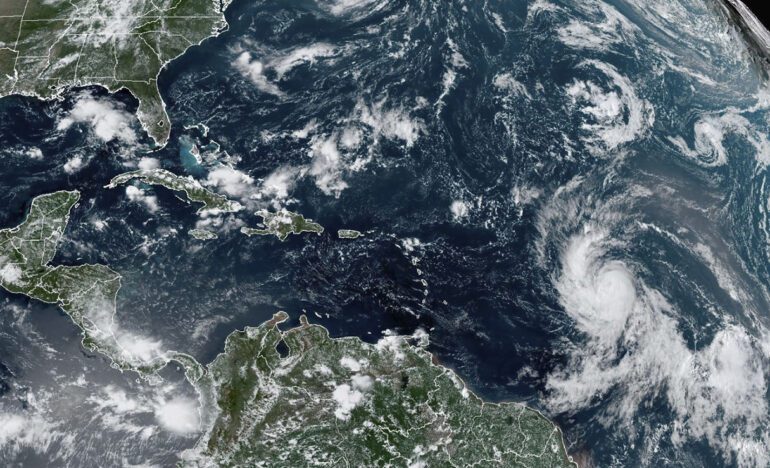TL;DR:
- Weather satellites struggle with accurate precipitation estimates compared to ground-based radar data.
- AI, through deep learning techniques, significantly improves satellite-based precipitation predictions.
- The study focused on GOES-R satellites and demonstrated superior performance in matching ground-based radar estimates.
- Integration of lightning data further enhanced the accuracy of heavy precipitation estimations.
- The potential for a global precipitation map using geostationary satellite data from multiple countries.
- Future research aims to test AI systems in various locations and enhance estimates with additional data.
- Challenges remain in addressing small-scale precipitation variability in complex terrains.
Main AI News:
Weather satellites, although capable of tracking storm movements from orbit, have struggled to provide accurate precipitation estimates. Traditional algorithms analyzing satellite data have fallen short compared to those fueled by ground-based radar information. However, a groundbreaking study has demonstrated the potential of AI to significantly enhance satellite-based precipitation estimations, marking a pivotal moment in weather forecasting.
Accurate assessments of rainfall, snowfall, and hail are crucial for refining weather forecasts, managing essential water resources, and investigating climate change. Haonan Chen, a remote sensing scientist at Colorado State University in Fort Collins, explains that extracting surface-level precipitation data from satellite measurements, which mainly focus on cloud tops, poses a formidable challenge. It requires advanced models capable of bridging this gap.
Chen and his team tackled this challenge by harnessing data from the Geostationary Operational Environmental Satellites (GOES), operated by the U.S. National Oceanic and Atmospheric Administration, with a particular emphasis on the GOES-R satellites, which observe visible and infrared light from Earth.
Their breakthrough came from employing deep learning techniques, which leverage artificial neural networks. These neural networks, akin to neurons in the human brain, adapt and optimize connections to solve complex problems. The neural net gradually identifies optimal patterns for computing results, refining its performance over time.
The neural network used in this study boasted over 1.3 million parameters. Researchers trained it to analyze GOES-R infrared data for the southwestern United States during specific periods, aiming to align its precipitation estimates with ground-based radar data. They also explored the impact of incorporating data from GOES-16’s lightning detector.
Chen notes that the availability of GPU servers in recent years has expedited the analysis of extensive satellite data and the training of intricate machine learning models.
During testing on GOES-R data from May to September 2020, the AI system surpassed other algorithms in matching ground-based radar estimates. Furthermore, when the AI model integrated lightning data, it displayed even greater accuracy in estimating heavy precipitation.
While the study primarily focused on the southeastern United States, the potential of GOES-R satellites covering the western hemisphere could extend this advancement to a global scale. Chen suggests that by combining geostationary satellite data from various countries in Asia, a comprehensive global precipitation map could become a reality, particularly benefitting regions lacking ground-based weather radar.
Future research will center on evaluating the adaptability of AI systems to diverse locations. The incorporation of additional data, such as wind, moisture, and local terrain features, holds promise for further enhancing precipitation estimations. However, challenges remain in addressing small-scale variability in complex terrains, which satellites often struggle to observe.
This groundbreaking study heralds a new era in weather forecasting, where AI-driven improvements in satellite precipitation estimations promise more accurate and comprehensive insights into Earth’s weather patterns.
Conclusion:
The integration of AI into satellite-based rainfall estimations represents a significant leap in weather forecasting capabilities. This advancement not only promises more accurate weather predictions but also opens doors for international collaboration in creating a comprehensive global precipitation map. For businesses in the weather forecasting and data analysis sectors, leveraging AI technology for enhanced accuracy could lead to more reliable and valuable services, potentially reshaping the market landscape.

